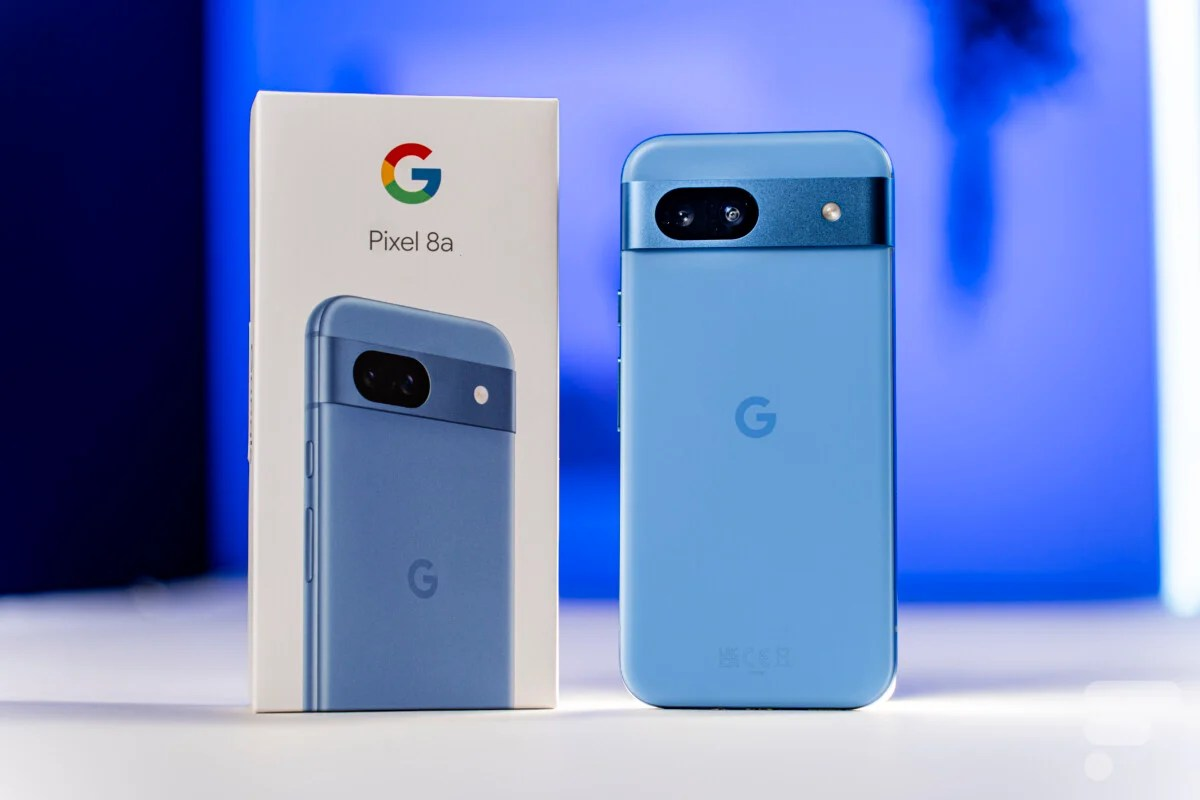Google Pixel 8a vs Pixel 8: So, why does the Pixel 8 cost $200 more?
The Google Pixel 8 and Pixel 8a are two standout devices from Google’s lineup, but the $200 price difference often leaves consumers wondering why. While both phones share some similarities, the Pixel 8 offers several key advancements that justify its higher cost. This article will explore these differences in depth, covering design, performance, camera capabilities, and additional features.
Design and Build Quality
When it comes to design and build quality, the Pixel 8 clearly stands out. The Pixel 8 features a more premium build with superior materials, including an aluminum frame and Gorilla Glass Victus on both the front and back. This gives the device a more refined, durable feel. In contrast, the Pixel 8a uses a combination of plastic and Gorilla Glass 3, which, while still durable, doesn’t quite match the premium aesthetic of its pricier counterpart.
Additionally, the Pixel 8 offers a higher level of water and dust resistance, rated at IP68, compared to the Pixel 8a’s IP67 rating. This means that the Pixel 8 can withstand more challenging environments, making it a more reliable option for those who require a rugged device. These design differences contribute significantly to the higher price point of the Pixel 8.
Performance and Hardware
Performance is another key area where the Pixel 8 justifies its higher price. The Pixel 8 is powered by Google’s latest Tensor G3 chip, which provides a noticeable performance boost over the Tensor G2 chip found in the Pixel 8a. This translates to faster app load times, smoother multitasking, and an overall snappier user experience.
The Pixel 8 also comes with more RAM, offering 8GB compared to the 6GB found in the Pixel 8a. This additional memory supports better performance in high-demand applications and gaming scenarios. Moreover, the Pixel 8 includes UFS 3.1 storage, which is faster than the UFS 2.2 storage in the Pixel 8a, leading to quicker data access and file transfers.
Key performance and hardware differences:
- Tensor G3 chip vs. Tensor G2 chip
- 8GB RAM vs. 6GB RAM
- UFS 3.1 storage vs. UFS 2.2 storage
Camera Capabilities
For many, the camera is one of the most important aspects of a smartphone, and the Pixel 8 doesn’t disappoint. It features a more advanced camera system, with a 50MP primary sensor compared to the 12.2MP sensor on the Pixel 8a. This allows for sharper, more detailed photos in a variety of lighting conditions.
The Pixel 8 also boasts better low-light performance and more sophisticated image processing capabilities, thanks to the updated Tensor G3 chip. Additional features like optical image stabilization (OIS) and improved Night Sight further enhance the camera’s prowess. Meanwhile, the Pixel 8a offers a competent camera experience but lacks these advanced features, making it less appealing to photography enthusiasts.
Display Quality
The display is another area where the Pixel 8 shows its superiority. It features a 6.2-inch OLED display with a 120Hz refresh rate, providing smoother scrolling and a more responsive feel, especially in gaming and high-frame-rate videos. In contrast, the Pixel 8a has a 6.1-inch OLED display but with a 60Hz refresh rate, which is adequate but not as fluid as the Pixel 8.
Moreover, the Pixel 8 offers a higher resolution and better color accuracy, making it more suitable for media consumption and professional work. HDR support is also more advanced in the Pixel 8, ensuring deeper blacks, brighter whites, and more vibrant colors in supported content.

Battery Life and Charging
Battery life is another critical factor for smartphone users, and both devices offer respectable performance in this area. However, the Pixel 8 has a slight edge thanks to its more efficient hardware and larger battery capacity. The Pixel 8 packs a 4600mAh battery compared to the 4400mAh in the Pixel 8a, providing longer usage between charges.
Charging speeds also differ, with the Pixel 8 supporting faster wired and wireless charging options. It offers 30W wired charging and 18W wireless charging, whereas the Pixel 8a supports 18W wired charging with no wireless charging capabilities. These differences can be crucial for users who need their devices to recharge quickly and efficiently.
Conclusion
In conclusion, while both the Pixel 8 and Pixel 8a offer excellent features and performance, the Pixel 8 justifies its $200 higher price point with several key improvements. These include a more premium design, better performance thanks to the Tensor G3 chip and additional RAM, superior camera capabilities, a higher-quality display, and faster charging options. These features collectively make the Pixel 8 a more versatile and powerful device, suitable for users who demand the best from their smartphones.
FAQs
Q1: Is the Pixel 8 worth the extra $200 compared to the Pixel 8a?
A1: Yes, the Pixel 8 offers several significant enhancements such as a more powerful processor, better camera system, higher build quality, and improved display, which justify the additional cost.
Q2: Does the Pixel 8 support wireless charging?
A2: Yes, the Pixel 8 supports 18W wireless charging, whereas the Pixel 8a does not support wireless charging.
Q3: What is the key difference in display quality between the Pixel 8 and Pixel 8a?
A3: The Pixel 8 features a 6.2-inch OLED display with a 120Hz refresh rate, offering smoother scrolling and better overall responsiveness compared to the 60Hz display of the Pixel 8a.
Q4: Are there any differences in RAM between the two models?
A4: Yes, the Pixel 8 comes with 8GB of RAM, while the Pixel 8a is equipped with 6GB of RAM, contributing to better multitasking and performance in the Pixel 8.
Q5: What additional camera features does the Pixel 8 offer over the Pixel 8a?
A5: The Pixel 8 has a more advanced camera system, featuring a 50MP primary sensor, optical image stabilization, and improved low-light performance, which are not present in the Pixel 8a.
